A well-implemented mobility and recovery routine is crucial for your overall health, longevity, and the sustainability of your fitness routine. These practices help prevent muscle soreness and tightness while maintaining the pliability and strength of your joints and ligaments—ultimately allowing you to keep working hard in the gym.
Mobility, flexibility, and recovery also influence long-term health. A mobile, flexible body not only enhances movement during workouts but also supports your ability to perform daily activities as you age. In addition, flexibility work supports healthy blood flow throughout the body. At NIFS, we offer several classes and services designed to help you stay mobile, flexible, and well-recovered. Read about them below and why you should incorporate them into your routine!
 Yoga and Stretch Classes
Yoga and Stretch Classes
NIFS Yoga Levels One and Two, Fundamentals of Stretching, and CIRCL Mobility classes provide accessible ways to integrate mobility, recovery, and mindfulness into your life.
Yoga allows you to slow down your movement patterns, focus on your breath, and tune in to what your body feels in each pose. It is also a safe, low-impact form of movement that remains beneficial as we age.
Stretch classes help alleviate and prevent muscle soreness while maintaining joint and ligament health—both essential for sustaining any fitness routine long term. The static and dynamic stretching in these classes encourages mindfulness and deeper breathing.
Whether you’re a high-level athlete or simply want to move more comfortably throughout your day, adding yoga or stretch classes to your routine will support healthier joints, improved flexibility, and better muscle recovery.
Functional Movement Screen and One-on-One Assisted Stretching
A Functional Movement Screen (FMS) can reveal muscle or joint imbalances that may be affecting your movement quality or efficiency. Identifying these imbalances early not only enhances your current exercise routine but also supports healthy movement as you age.
If you’re unsure where to begin, one-on-one assisted stretching is a great option. This personalized service benefits both the aging adult hoping to stay mobile and independent, and the marathon runner training for a new PR. Assisted stretching targets specific muscles without placing strain on your body, allowing for deeper, more effective, and mindful stretching.
Both of these services are valuable tools for any individual looking to improve performance, mobility, and overall quality of life.
A consistent routine of mobility, flexibility, and recovery is one of the most important investments you can make in your long-term health. NIFS offers a variety of classes and services to help you move better, feel better, and age well—no matter your fitness level.
It's not too late to participate in our Mindful November program! Be sure to complete each week’s prompt and grab a punch card. Attend your favorite yoga or stretch classes for a chance to win your own 60-minute assisted stretching session.

 Shin splints, those nagging pains along the front or inner part of your lower leg, are a common issue for runners, especially when ramping up mileage. Whether you're training for a race or simply increasing your weekly distance, ignoring the early warning signs can lead to prolonged discomfort or even more serious injuries. The good news? With the right approach, you can prevent shin splints or recover quickly if they do arise.
Shin splints, those nagging pains along the front or inner part of your lower leg, are a common issue for runners, especially when ramping up mileage. Whether you're training for a race or simply increasing your weekly distance, ignoring the early warning signs can lead to prolonged discomfort or even more serious injuries. The good news? With the right approach, you can prevent shin splints or recover quickly if they do arise.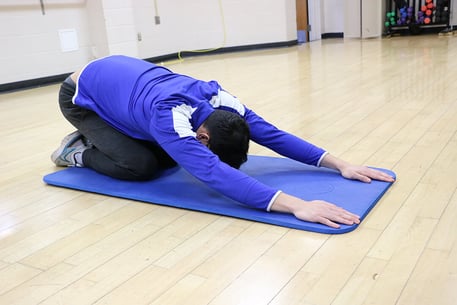
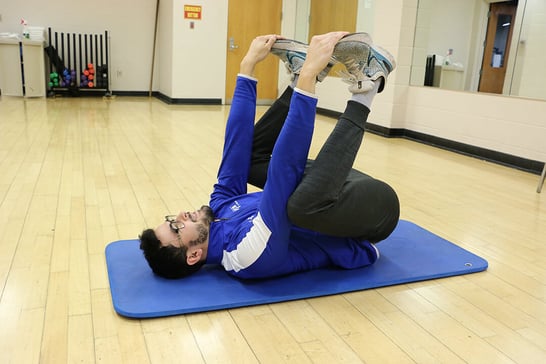
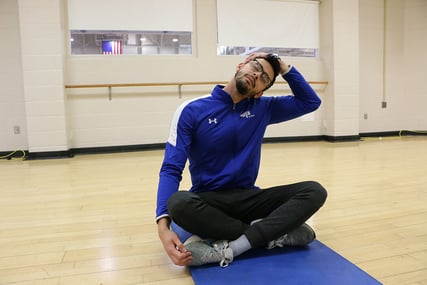
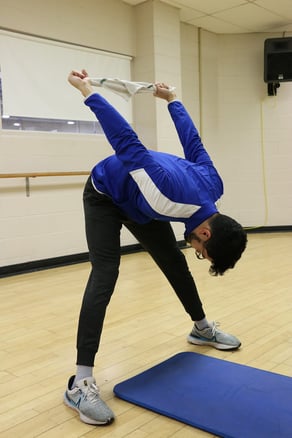
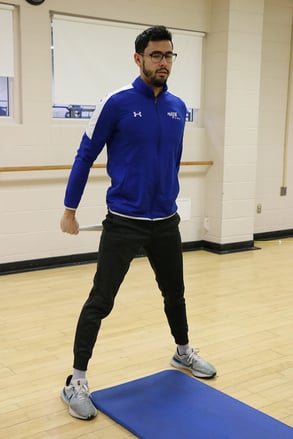
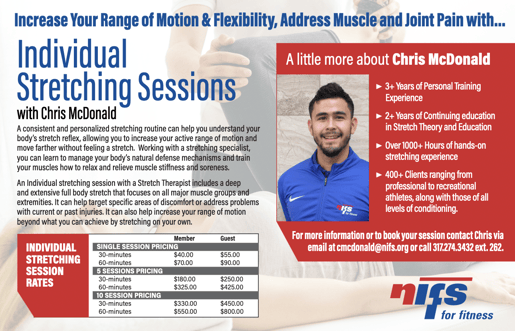
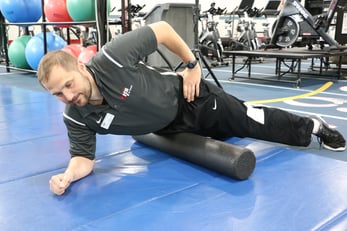 Most workout formulas include a warmup process. If hip mobility is a focus, your workout would benefit from a few additions to the routine. Foam rolling, which has been around for a while, is a great way to get blood circulating to the muscles and decrease soreness (if you worked them out prior). Spending a few minutes to roll out the trigger spots (areas of higher tenderness) will help you feel better, and you will be able to exercise on a more consistent basis.
Most workout formulas include a warmup process. If hip mobility is a focus, your workout would benefit from a few additions to the routine. Foam rolling, which has been around for a while, is a great way to get blood circulating to the muscles and decrease soreness (if you worked them out prior). Spending a few minutes to roll out the trigger spots (areas of higher tenderness) will help you feel better, and you will be able to exercise on a more consistent basis.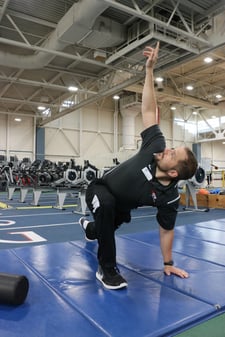 Second, I would suggest a dynamic movement stretch (rather than traditional static stretching) to help not only stretch the muscle, but also warm up the body for more movement. “The
Second, I would suggest a dynamic movement stretch (rather than traditional static stretching) to help not only stretch the muscle, but also warm up the body for more movement. “The 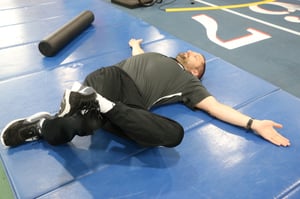 Finally, another great stretch to do is simply called a
Finally, another great stretch to do is simply called a 